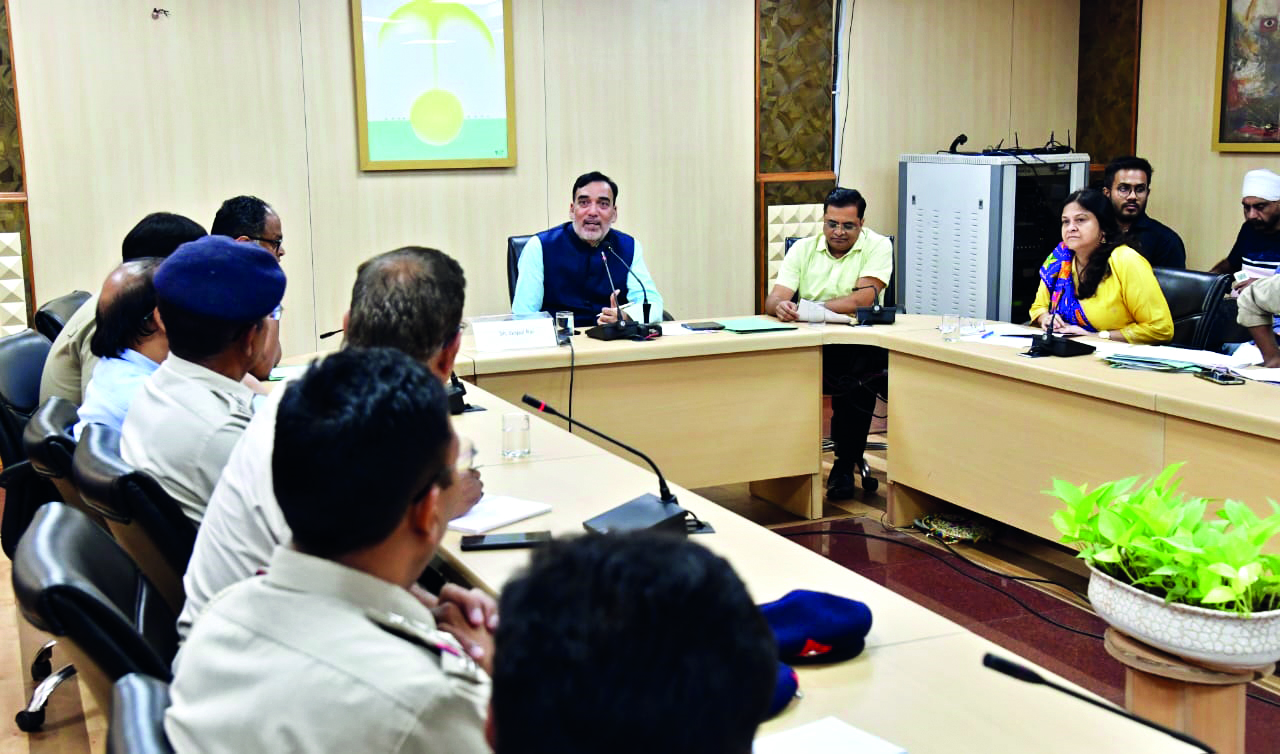Air pollution: Gopal Rai unveils series of strategic measures

New Delhi: As pollution levels in Delhi soar with the arrival of winter, the Aam Aadmi Party (AAP) government has stepped up its commitment to combat the environmental crisis. Environment minister Gopal Rai unveiled a series of strategic measures aimed at addressing air quality issues specifically in 13 identified pollution hotspots across the city.
During an emergency meeting held at the Delhi Secretariat, minister Rai discussed the urgent need for action, particularly in light of the recent rise in pollution levels. “With the onset of winter, pollution levels across North India are on the rise,” he stated. He reported that the overall air quality index (AQI) in Delhi has fallen into the ‘poor’ category, with certain areas recording alarming AQI readings exceeding 300.
The hotspots identified for immediate attention include Wazirpur, Mundka, Rohini, Jahangirpuri, Anand Vihar, Dwarka (Sector 8), Bawana, Narela, Vivek Vihar, Okhla Phase 2, Punjabi Bagh, Ashok Vihar, and RK Puram. The AQI in Wazirpur has reached a critical level of 381, followed closely by Mundka at 375. “For the past 4-5 days, Anand Vihar has consistently topped the list of most polluted locations,” Rai noted, highlighting the severity of the situation.
To address the pressing issue of dust pollution, the government has deployed 80 mobile anti-smog guns across these hotspots. “These guns will facilitate water sprinkling to manage dust levels, which are a significant contributor to rising pollution,” Rai explained. Moreover, Deputy Commissioners (DCs) from the Municipal Corporation of Delhi (MCD) have been designated to oversee and implement action plans tailored to each hotspot, ensuring that local pollution sources are promptly identified and mitigated.
Rai emphasised the need for coordination, stating, “To manage the entire coordination committee, one engineer from the DPCC has been deputed at each of the 13 locations along with the DCs.” He further revealed that these engineers would collaborate with the MCD’s General Commissioner to assist the coordination committees, submitting daily reports on progress to a central
command unit.
The minister provided specific details about pollution sources in Anand Vihar, identifying BS 3 and BS 4 diesel buses from Uttar Pradesh and ongoing NCRTC construction work as significant contributors. He remarked, “The main sources of pollution identified in Anand Vihar are the elevated road in front of the bus station, where diesel vehicles are coming in large numbers.”
Coordination committees have been established for each hotspot, with members drawn from various departments, including Transport, Public Works Department (PWD), and Delhi Traffic Police. For instance, in Mundka, the main issues include an RMC plant’s operation and poor road conditions on the Delhi-Rohtak highway. “The main issue in Mundka is the operation of an RMC plant, and the Delhi-Rohtak highway is in poor condition with unpaved roads and potholes,” Rai stated.
The government has identified illegal dumping and ongoing construction as key
issues in Narela, while in Rohini, biomass burning and construction activities pose significant challenges.



